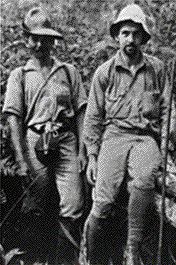Speciation - What are the major theories of speciation?

Peripheral speciation may produce interesting features
Peripherally isolated populations are likely to be small, perhaps living in relatively extreme conditions and possibly having a non-representative sample of the ancestral species's genes. Because of this, controversial conjectures have been made about how speciation works via peripherally isolated populations:
• Ernst Mayr (pictured opposite on the right) suggested that the speciating population may evolve rapidly (because the population is small) and by drift as well as selection.
• The founder effect: the peripheral population is formed by a small number of founder individuals, who lack some of their ancestor's genes. This is a controversial idea, because it implies that speciation might be non-adaptive.
• Speciation might be accompanied by a genetic revolution: an extensive re-organization of the gene pool, which takes place in the extraordinary genetic and environmental conditions of the peripherally isolated population.
| Next |



